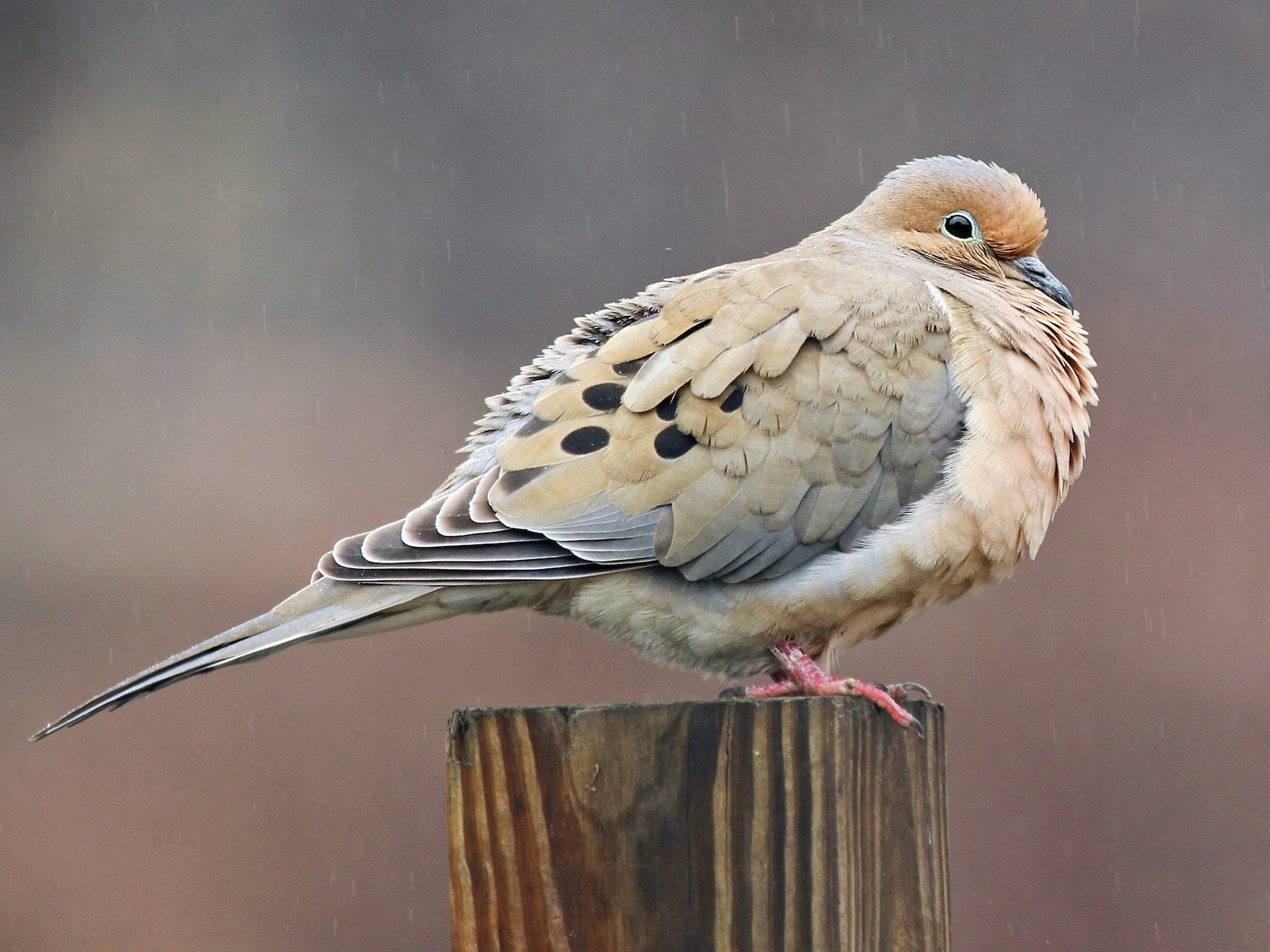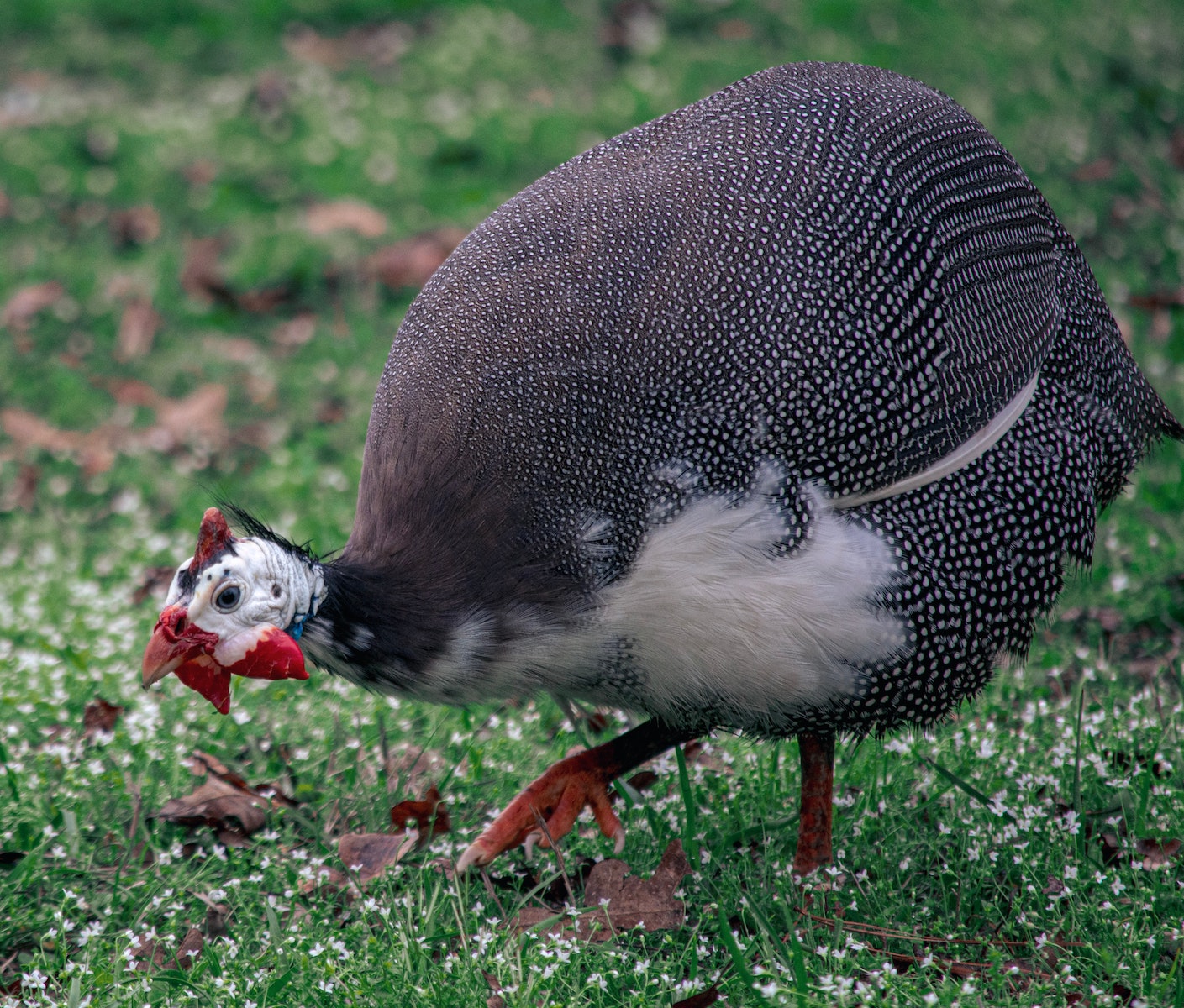Home>Production & Technology>Sound>What Does A Mourning Dove Sound Like


Sound
What Does A Mourning Dove Sound Like
Published: December 17, 2023
Discover the soothing sound of a mourning dove in our comprehensive guide. Hear the unique vocalizations and learn how to identify this gentle bird's calls.
(Many of the links in this article redirect to a specific reviewed product. Your purchase of these products through affiliate links helps to generate commission for AudioLover.com, at no extra cost. Learn more)
Table of Contents
Introduction
The Mourning Dove (Zenaida macroura) is a common bird species found across North and Central America. Known for its graceful appearance and soothing cooing sounds, the Mourning Dove holds a special place in the natural soundscape.
With its soft gray-brown plumage, long pointed tail, and slender body, the Mourning Dove is easily recognizable. This medium-sized bird is a member of the dove and pigeon family, and its gentle nature and elegant flight make it a favorite among birdwatchers and nature enthusiasts.
One of the remarkable features of the Mourning Dove is its vocalizations, which play a crucial role in communication and courtship. The mournful cooing sound produced by the male Mourning Dove during the breeding season is a distinctive trait of this species. The soothing melody of their calls can provide a tranquil ambiance in urban and rural environments alike.
In this article, we will explore the characteristics of the Mourning Dove, delve into the description of their unique vocalizations, discuss the variations in their sounds, and highlight the importance of their calls in the bird’s behavior and survival. We will also touch upon the factors influencing Mourning Dove vocalizations and other intriguing sounds produced by these fascinating birds.
So, let’s embark on this journey to discover what the Mourning Dove sounds like and uncover the secrets of their captivating vocalizations.
Characteristics of the Mourning Dove
The Mourning Dove possesses several distinct characteristics that make it a unique and fascinating bird species. Understanding these characteristics will help us appreciate the significance of its vocalizations and its role in the natural ecosystem.
1. Appearance: Mourning Doves have a slender body with a length of about 9-13 inches and weigh around 4-6 ounces. They have a soft gray-brown plumage that blends seamlessly with their environment, providing them with excellent camouflage. Their most distinct physical feature is their long, pointed tail, which adds to their graceful appearance. The male and female Mourning Doves look similar, with slight differences in size and color intensity.
2. Habitat: Mourning Doves can be found in a variety of habitats, including open woodlands, urban areas, farms, deserts, and grasslands. They are highly adaptable and can make their homes in both rural and urban environments.
3. Behavior: These birds are generally ground-dwelling, but they are also skilled fliers. Their flight is characterized by swift, darting movements and a distinctive whistling sound produced by their wingbeats. Mourning Doves are diurnal, meaning they are active during the day and rest or roost at night.
4. Diet: Mourning Doves primarily feed on seeds and grains, including those from various grasses, weeds, and cultivated crops. They also consume small insects and fruits as part of their diet.
5. Breeding: Mourning Doves are monogamous and form strong pair bonds during the breeding season. They build simple nests made of twigs, grass, and other plant material, often located in trees, shrubs, or on man-made structures such as rooftops. The female lays two white, oval-shaped eggs, which are incubated by both parents for approximately two weeks. Shortly after hatching, the young birds, called squabs, are fed a special secretion from the adult’s crop known as “pigeon milk.”
Understanding the physical attributes and behaviors of the Mourning Dove gives us a better appreciation of their unique vocalizations and the role they play in the bird’s survival and communication.
Description of the Mourning Dove’s Call
The vocalizations of the Mourning Dove are perhaps one of its most captivating features. The male’s melodic and mournful cooing call is a defining characteristic of this species. It is often described as a soft, rhythmic “coo-oo, coo, coo” sound.
The Mourning Dove’s call is rich and resonant, with a distinctive pattern that consists of five distinct notes. The primary note starts low, rises in pitch, and then falls again, followed by two shorter notes that gradually decrease in volume and pitch. The call concludes with two more short, low-pitched notes, creating a melodic and soothing cadence.
The mournful quality of the Mourning Dove’s call is believed to be associated with the bird’s name. It is thought to resemble the sound of mourners, hence the name “Mourning Dove.” However, some people interpret the call as a more peaceful and meditative sound, reminiscent of a gentle lullaby.
The male Mourning Dove is primarily responsible for vocalizing during the breeding season. Their call serves as a means of communication and attracts potential mates. The vocalization acts as a territorial and courtship display, indicating the availability of a suitable nesting site and the male’s strength and reproductive fitness.
While the male’s call is the most well-known, females also produce a similar, albeit shorter and softer version of the vocalization. This call is often used during courtship or to signal their presence to their partner.
The Mourning Dove’s call is not limited to the breeding season. They are vocal year-round, and their calls provide important communicative functions beyond courtship. They use vocalizations to maintain contact with their mate and offspring, to warn of potential predators, and to communicate with other doves in their vicinity.
Listening to the Mourning Dove’s call can have a calming effect, and many people find it soothing and reminiscent of nature’s tranquility. Its presence in our surroundings adds a peaceful ambiance, especially in the early morning or late afternoon when their calls are most prevalent.
Overall, the Mourning Dove’s call is a beautiful and melodic sound that reflects the bird’s gentle nature and plays a vital role in their communication and reproduction.
Variations in Mourning Dove Sounds
While the mournful cooing call is the most recognizable sound associated with Mourning Doves, there are variations in their vocalizations. These variations can be influenced by factors such as geographic location, individual variation, and social context.
1. Regional Dialects: Mourning Dove vocalizations can vary across different regions. Some studies have found slight differences in the pitch, rhythm, and cadence of their calls among populations in different parts of North America. These regional dialects could be a result of genetic variation or cultural transmission of vocal patterns among the doves in specific areas.
2. Individual Variation: Just like humans have unique voice patterns, individual Mourning Doves may have slight variations in their calls. These variations can be influenced by age, gender, size, and overall health of the bird. Each dove has its own distinctive voice, which allows individuals to be recognized by other doves in their vicinity.
3. Contextual Vocalizations: Mourning Doves produce different vocalizations to communicate various messages. In addition to the melodious cooing call, they can emit a variety of other sounds. When startled or alarmed, they may produce a quick series of short, rapid coos or a sharp alarm call to alert others of a potential threat. They also engage in soft, low-pitched cooing exchanges with their mates or offspring to maintain contact and express affection.
4. Courtship Displays: During courtship, Mourning Doves engage in elaborate visual displays along with vocalizations. Male doves can be seen bowing, puffing out their chest feathers, and launching into short flight displays to impress females. These visual displays are often accompanied by rhythmic cooing sounds to attract potential mates.
5. Vocal Imitations: Mourning Doves have been known to mimic the sounds of other bird species. Although not as common as in other bird families, some doves have been observed imitating the calls of owls, hawks, and other doves. This behavior is believed to serve as a form of mimicry or as a means of territorial defense.
Understanding the variations in Mourning Dove sounds adds to the complexity and richness of their vocal repertoire. These nuances further highlight the adaptability and communication abilities of these remarkable birds.
Importance of Mourning Dove Calls
Mourning Dove calls play a crucial role in the behavior and survival of these birds. They serve multiple purposes and have an impact on various aspects of the Mourning Dove’s life.
1. Communication: The primary function of Mourning Dove vocalizations is communication. They use their calls to establish territories, attract mates, and maintain contact with their partner and offspring. The mournful cooing call serves as a signal to other doves in the vicinity, indicating their presence and marking their territory.
2. Courtship and Pair Bonding: The melodious and rhythmic cooing call of the male Mourning Dove is used to attract potential mates during the breeding season. This vocal display, often accompanied by visual courtship displays, helps in pair bonding and mate selection. The female responds to the male’s calls, and together, they establish a strong pair bond for successful reproduction.
3. Territory Defense: Mourning Dove calls also serve to defend territories from intruding individuals. Male doves will often vocalize more loudly and vigorously in defense of their nesting area or feeding grounds. These vocalizations act as a warning to potential intruders and serve to establish and maintain their exclusive territories.
4. Alarm Calls: Mourning Doves produce sharp alarm calls when they sense danger or perceive a potential threat. These alarm calls alert other doves in the area, as well as other bird species, to the presence of predators or other disturbances. This vocal warning system allows the doves to protect themselves and their offspring from harm.
5. Bonding and Family Communication: Mourning Doves use soft and gentle vocalizations to communicate with their mate and offspring. The cooing exchanges between partners help to strengthen their bond and maintain social cohesion within the family unit. These vocalizations also play a role in guiding and instructing the young doves, allowing for effective communication and nurturing behaviors.
The importance of Mourning Dove calls extends beyond their immediate biological functions. These vocalizations also contribute to the overall soundscape of the environment, adding a sense of tranquility and natural beauty. Many people find the soft cooing of Mourning Doves to be soothing and comforting, providing a connection to the natural world.
By understanding the significance and purpose of Mourning Dove vocalizations, we gain a deeper appreciation for these birds and their place in the ecosystem.
Factors Influencing Mourning Dove Vocalizations
The vocalizations of Mourning Doves can be influenced by several factors, including environmental, social, and individual factors. Understanding these factors provides insights into the complexity and adaptability of their vocal repertoire.
1. Breeding Season: During the breeding season, Mourning Dove vocalizations are more frequent and pronounced. Males increase their vocalizations to attract mates and establish territories. The intensity and frequency of their calls are influenced by the hormonal changes that occur during the breeding season.
2. Environmental Factors: The environment plays a significant role in shaping Mourning Dove vocalizations. Factors such as habitat type, temperature, and availability of food can impact the timing and intensity of their calls. In urban environments, where there is a higher concentration of human activity and ambient noise, the vocalizations of Mourning Doves may be altered or modulated to compete with background noise.
3. Social Context: Mourning Dove vocalizations are influenced by social interactions. Males may increase their vocalizations in the presence of other males to assert dominance or establish territories. They may also engage in vocal duets with their mates as a form of bonding and joint vocal display.
4. Mating Status and Courtship: The vocalizations of Mourning Doves vary depending on their mating status. Male doves intensify their calls during courtship, using their melodious cooing sounds to attract and court potential mates. Female doves may respond to the male’s calls with softer and shorter vocalizations as a sign of receptivity.
5. Individual Variation: Just as humans have unique voices, individual Mourning Doves may have variations in their vocalizations. Factors such as age, gender, and overall health can influence the quality and characteristics of their calls. These individual differences allow for recognition and social communication among the doves.
6. Song Learning: Young Mourning Doves learn vocalizations from adults through a process known as song learning. They acquire and refine their vocal repertoire by imitating the calls of their parents and surrounding individuals. This cultural transmission helps maintain regional dialects and ensures the continuity of vocal traditions within Mourning Dove populations.
Understanding the various factors that influence Mourning Dove vocalizations helps us appreciate the adaptability and complexity of their communication strategies. It also highlights the importance of the environment and social context in shaping and maintaining their vocal repertoire.
Other Sounds Produced by Mourning Doves
While the mournful cooing call is the most famous and distinctive sound associated with Mourning Doves, these birds are capable of producing a range of other sounds. These vocalizations serve different purposes and add to the diversity of their auditory repertoire.
1. Wing Whistles: The Mourning Dove’s wings produce a distinct whistling sound during flight. This sound is created by the air rushing through the wing feathers, and it is often described as a soft, whistling “whoosh” or a subtle fluttering noise. These wing whistles are most noticeable during takeoff or when the birds are performing agile aerial maneuvers.
2. Bill Clapping: When Mourning Doves are engaged in courtship or displaying aggression, they may produce a sound known as bill clapping. This sound is created by the rapid opening and closing of their beaks, resulting in a soft clapping noise. Bill clapping is accompanied by other visual displays and is a sign of territorial behavior or courtship rituals.
3. Fluttering Sounds: Mourning Doves can create a fluttering sound by rapidly beating their wings while perched or in-flight. This fluttering noise is often heard when they are taking off from a resting spot or when engaged in a display of excitement or alarm.
4. Chattering and Cooing Variations: Alongside their primary cooing call, Mourning Doves can also produce variations of soft chattering or cooing sounds. These vocalizations may serve as contact calls between mates or parents and offspring, allowing for communication within their social groups.
5. Bill Rubbing: Mourning Doves have been observed rubbing their bills against each other, producing a unique raspy or grinding sound. This behavior is believed to be a form of billing, an intimate act between mates that strengthens their bond and reinforces their social connection.
These additional sounds produced by Mourning Doves provide a glimpse into the complex vocal repertoire of these birds. They contribute to communication, territorial behavior, courtship rituals, and social bonding. Each sound adds a unique element to the overall soundscape of these graceful birds.
Conclusion
The Mourning Dove’s vocalizations are an integral part of their identity and behavior. Their distinct and mournful cooing call, along with various other sounds, plays a vital role in communication, courtship, territorial defense, and social bonding.
From the soft and rhythmic cooing during the breeding season to the fluttering sounds of their wings and the occasional bill clapping, Mourning Doves have a diverse vocal repertoire. These sounds serve to convey messages, establish territories, attract mates, and maintain social cohesion within their family groups.
Mourning Dove calls are not only important for the survival and breeding success of these birds, but they also contribute to the natural soundscape and provide a sense of tranquility and connection to nature. Their soothing melodies and gentle nature evoke a sense of peace and beauty in both rural and urban environments.
Understanding the factors that influence Mourning Dove vocalizations, such as breeding season, social context, and individual variation, allows us to appreciate the complexity and adaptability of their communication strategies. It also underscores the importance of environmental factors in shaping their vocalizations.
As we listen to the melodic cooing of Mourning Doves, we are reminded of the intricate web of relationships that exist within the natural world. Their calls serve as a reminder of the beauty and diversity of avian vocalizations and the significance of these sounds in the lives of these remarkable birds.
In conclusion, the Mourning Dove’s vocalizations are not just sounds in the background, but rather an enchanting symphony that adds depth and harmony to the natural world.











